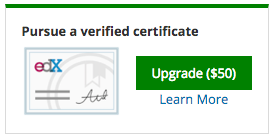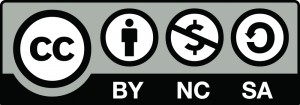Course syllabus: Scratch | Programming for Teachers
Index
1. Course overview
2. Learning objectives
3. What we expect from you
4. What you can expect from us
5. Course structure
6. Resources & Tools
7.
8.
Before we begin
Due to the great success and many applicants, the original Dutch version Scratch: Programming for Teachers has been translated into English.
Before we introduce ourselves further, please bear in mind that we are not native English speakers. Some spelling errors or pronunciation errors might have been made. If anything unclear, please write us an e-mail to Sabine, via e.p.c.l.verdult@tudelft.nl and start the subject of the e-mail with “Scratch Teachers error”.
We will do our best to come back to you within a week.
Important
Please note: In order to keep our content freely accessible to the world, but make our MOOCs sustainable, only verified learners will now be able to access the graded assignments in this course. Do you need financial assistance? EdX offers up to a 90% discount on our verified certificates to learners who cannot afford to pay full price. Check the edX support page for financial assistance.
1. Course overview
Due to the big success in The Netherlands of Scratch: Programming for Teachers, TU Delft decided to translate this MOOC into English. Over 1000 teachers followed this course, and it’s great to have you on board as well!
Programming is becoming a more and more important skill to have. Childhood is a great time to start learning programming and to develop computational thinking, creativity, and problem- solving skills. In this
This MOOC teaches programming in Scratch through fun videos which
Every week you build a different Scratch project yourself: a flappy bird game, a virtual pet or a Mondriaan like artwork. Also weekly, new programming blocks are taught and together we’re working on ways to improve your written code.
In addition, you will learn how you can integrate the same programming lessons in your class for both primary and secondary education.
Many programming principles covered in Scratch also apply to other programming languages such as JavaScript and Python. An introduction to Python as well as hardware such as robotics and a micro
The content of this course is based on a course that was used in primary schools in The Netherlands with great success. The material follows the educational curriculum for programming in primary education of The Netherlands.
2. Learning objectives
So, what are the learning objectives of this course?
- Programming in Scratch
- Broad programming concepts (loops, variables, data structures)
- Didactics of programming in education and integrating this in your own classes
3. What we expect from you
This course is instructor-paced, meaning every week a new sequence of
We also encourage you to participate on the forum via edX and to share
Last, we might give you some homework and hand-out additional course material. We encourage you to do this homework and to use this course material in your class.
4. What you can expect from us
Through the forum, the developers of this course are there for you to answer any question you have. We check the
You can also send an e-mail to us via scratch-ewi@tudelft.nl
Last, you have the opportunity to get your verified certificate. So either you chose the track free of charge, or read more about the verified certificate on this page.
5. Course structure
This course has a duration of 8 weeks in total, in which each week new themes and programming concept are covered. Sometimes, repetition of certain concepts might occur. This is only because repetition in coding makes perfect!
Before we start programming (on this platform this is called Week 1) we will elaborate a little bit on edX – the online platform on which the video lectures are located – and we provide you some additional information such as a manual.
Below, you can find a brief explanation
Week 1: What is programming?
Starts Monday, October 15th
This week we highlight the importance of programming, go deeper into what programming actually is and we introduce to you the actual programming environment in which you will be coding, namely Scratch.
Scratch is a programming language developed by MIT, one of the most famous technical universities of the United States of America.
Scratch has
Also, you will learn your first programming concepts, namely a “what-if” and a loop.
Week 2: timing & looks
Start Monday, October 22nd
This week, you will let your animations – also called “sprites” – communicate with each other. You will learn what looks are in the Scratch environment and with regard to didactics, we will talk about how to do some expectation management. How to formulate questions in class and towards students, and how they will be able to check their own work.
Week 3: signals
Starts Monday, October 29th
This week we will be talking about working unplugged (without
For developing our coding skills, we will learn how to respond to a click of the mouse and to signals. Also, we will give you some tips on how to integrate this into the classroom.
Week 4: lists & randomness
Starts Monday, November 5th
This week you will learn about the concept of lists and how to randomly assign something to the computer. In terms of didactics, we will give you some great tips on how to integrate lists into the classroom. Last, we will also give you some
Week 5: variables
Starts Monday, November 12th
This week, you will learn one of the most important concepts in programming, namely what a variable is.
Week 6: repetition of concepts & algorithms
Starts Monday, November 19th
Week 7: input/output and more
Starts Monday, November 26th
This week we will cover the concepts of lists again and we will be talking about working unplugged and abstractions. How to use this in class?
Week 8: robots & electronics
Starts Monday, December 3rd
This is the final week and in here we will talk about robotics and electronics. For the didactics of this week, we will go deeper into an experienced based and concept-based approach.
6. Resources & Tools
edX
All videos needed for this course, are on this edX platform. So the same environment on which you’re reading this syllabus on right now. The links needed to get into the right environment to write your code in – the Scratch website – will be provided in the texts above the videos.
Scratch
As mentioned earlier – we will be creating our programs on the Scratch platform. Via this website, you can see many other programs made by other coders, built something entirely new yourself or to continue building on someone else’s program. Through our videos, we will be giving you the links to end up at the right program at the right time.
Additional materials
Sometimes we provide additional materials.
You may also ask for help via the forum (Discussion page) or have a look at the FAQ section.
7. Assessment & certificate
Your final grade consists of the following elements:
Homework assignments count for 75%. Quizzes count for 10% and peer instruction assignments count for 15%.
Together, this is 100% and you will pass this course once you’ve fulfilled 60% or more. You can keep track of your progress by clicking on the “Progress” button in the menu above.
Certificate
Only verified participants have access to graded assignments. In order to successfully complete the course you need to will need to score 60%. All assignments are mandatory. Assessment criteria for the assignments are detailed in the course. Verified participants can check their score at any time under the course’s Progress page.
Upgrade to a Verified Certificate gives you:
- a certificate if you successfully completed the course;
- access to graded assignments;
- access to the archived course after the end date.
These certificates will indicate you have successfully completed the course, but will not include a specific grade. Certificates will be issued by edX under the name of DelftX, designating the institution from which the course originated.
Do you need financial assistance? EdX offers up to a 90% discount on our verified certificates to learners who cannot afford to pay full price. Check the edX support page for financial assistance.
To get this certificate, a fee is required. Click on the upgrade button as the image below indicates.

The certificate will automatically be generated the moment you finished this course.
8. Licence
The course materials of this course are
If you choose to reuse or repost DelftX course materials you must give proper attribution to the original TU Delft faculty author(s). Please utilize the following citation:
"This material was created by or adapted from material posted on the
You must also include a copy of the Creative Commons license used by DelftX, with every copy of the TU Delft materials or the derivative work you create from it.
